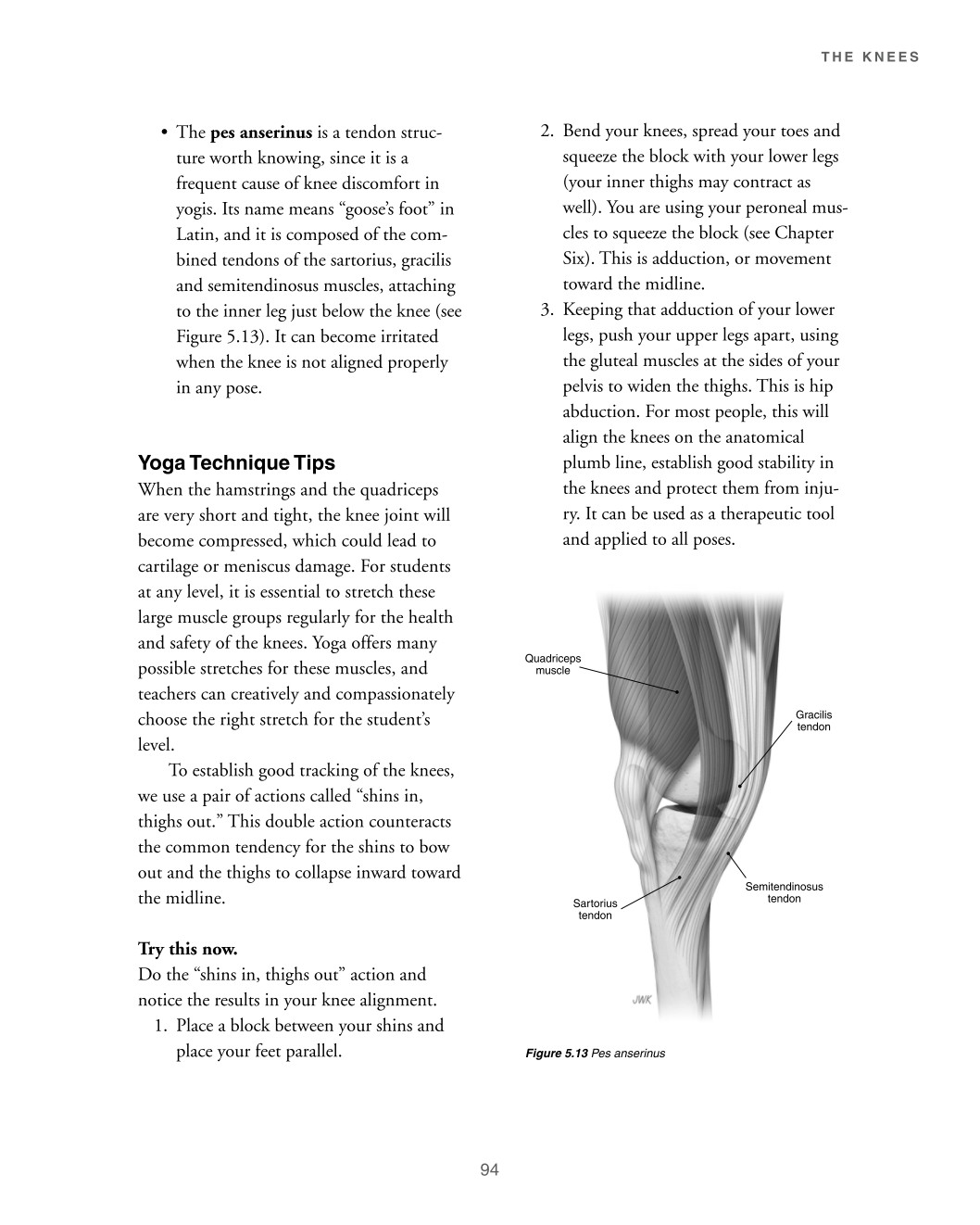

THE KNEES
• The pes anserinus is a tendon struc- ture worth knowing, since it is a frequent cause of knee discomfort in yogis. Its name means “goose’s foot” in Latin, and it is composed of the com- bined tendons of the sartorius, gracilis and semitendinosus muscles, attaching to the inner leg just below the knee (see Figure 5.13). It can become irritated when the knee is not aligned properly in any pose. Yoga Technique Tips When the hamstrings and the quadriceps are very short and tight, the knee joint will become compressed, which could lead to cartilage or meniscus damage. For students at any level, it is essential to stretch these large muscle groups regularly for the health and safety of the knees. Yoga offers many possible stretches for these muscles, and teachers can creatively and compassionately choose the right stretch for the student’s level. To establish good tracking of the knees, we use a pair of actions called “shins in, thighs out.” This double action counteracts the common tendency for the shins to bow out and the thighs to collapse inward toward the midline. Try this now. Do the “shins in, thighs out” action and notice the results in your knee alignment. 1. Place a block between your shins and place your feet parallel.
2. Bend your knees, spread your toes and squeeze the block with your lower legs (your inner thighs may contract as well). You are using your peroneal mus- cles to squeeze the block (see Chapter Six). This is adduction, or movement toward the midline. 3. Keeping that adduction of your lower legs, push your upper legs apart, using the gluteal muscles at the sides of your pelvis to widen the thighs. This is hip abduction. For most people, this will align the knees on the anatomical plumb line, establish good stability in the knees and protect them from inju- ry. It can be used as a therapeutic tool and applied to all poses.
Quadriceps muscle Gracilis tendon
Sartorius tendon Semitendinosus tendon
Figure 5.13 Pes anserinus
94